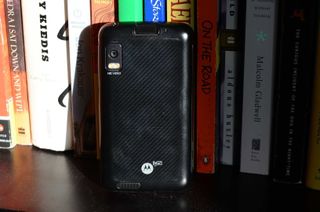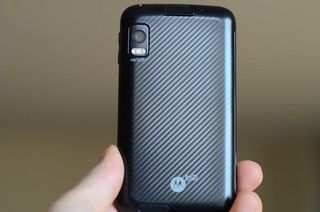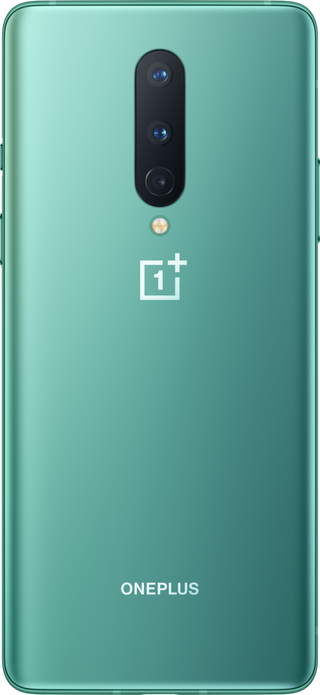These are the phones that kickstarted my love for Android

I was in the seventh grade when Steve Jobs introduced the first iPhone on the stage of MacWorld 2007. Of course, at the time I didn't realize I was watching what would quickly go down as one of the most significant keynote addresses in modern history, but I knew that I wanted one.
I wanted an iPhone so badly
I remember insistently begging my parents to switch our Verizon plan over to AT&T so I could ditch my flip phone and we could all get iPhones (remember when carrier exclusivity was a big thing?) ... but it didn't happen. At least, not until the following year when the iPhone 3G was released, and we finally ported our numbers away from Big Red. I was ecstatic; it was a whole new world coming from my LG VX8300, and with the addition of Apple's new App Store, I was downloading every app I could find.
The magic eventually wore off.
For the first couple of years, I couldn't put my iPhone 3G down, and once our two-year contract with AT&T was up for renewal, we upgraded to the iPhone 4 — a shockingly gorgeous phone for its time.
With new hardware, I fell in love all over again ... but eventually, I started to get bored of the same old software. Some of my friends in high school had Android phones that looked very different from the iOS interface I'd grown tired of, and before I knew it I was finding ways to jailbreak my iPhone and dual-boot Android for kicks.
It was ... terrible. Janky, slow, unresponsive — not to mention outdated; if memory serves, I was only able to run Cupcake when Android 2.3 "Gingerbread" was already starting to roll out to some phones. But it was enough to pique my interest, and before I knew it I was scrolling through Craigslist ads looking to trade my beloved iPhone 4 away for some fancy Android phone.
But eventually, I got bored

Luckily, it didn't take long. I got an offer for an HTC Inspire (known globally as the Desire HD), which came with the bonus perk of being AT&T's first 4G-capable phone over HSPA+. That was enough of a selling point for me — not to mention it had equally impressive build quality and an unfathomably huge 4.3-inch display. Who could need a screen that big?!
For all its flaws (particularly with the miserable battery door), the Inspire sparked an entirely new level of excitement in mobile tech for me. Android was so different from iOS, and everything was so customizable. And that signature HTC clock widget. Who could forget it when it took up half the screen?
Be an expert in 5 minutes
Get the latest news from Android Central, your trusted companion in the world of Android
I'm not sure where my Android experience would have started without the Inspire.
I was enthralled; the Inspire recalls such fond memories for me that I'm sifting through eBay listings as I write this article, wondering if I should drop the $30 on one now just to relive the nostalgia. But while a 4.3-inch display sounds comically small by today's standards, I was accustomed to my iPhone 4's 3.5-inch display at the time, and the Inspire just felt like a little too much phone.
So once again, I turned to Craigslist to initiate a trade — this time for the Motorola Atrix, whose 4-inch display felt like a good compromise. The Atrix was a far less flashy and ... dare I say, ugly phone compared to the Inspire, and its MOTOBLUR software interface wasn't great, even for its time.
But the prospect of its Lapdock accessory, which converted the Atrix into something resembling an early imagining of a Chromebook, along with its top-mounted fingerprint sensor (one of the first of its kind!) were bold and futuristic enough to draw me in. Sadly, I never managed to get ahold of a Lapdock, but I enjoyed the Atrix for a good while ... until I realized that I really missed my Inspire and found someone to trade me yet again.
I couldn't shake the Inspire

Yeah, I was indecisive in high school, but with the mobile space absolutely booming with interesting new phones left and right, can you really blame me? This time, I stuck with the Inspire for a good while, remembering all the things I loved and hated about it. I remember carrying spare batteries in my school bag, since the Inspire's battery life was rather un-inspiring and, well, changing batteries was a thing you could do back then.
Having experienced two flavors of Android at this point, I wanted to keep things rolling, and naturally gravitated towards rooting my phone and installing various custom ROMs. I wasn't very good at it, and I managed to brick my phone on more than one occasion — explaining to my friends why I didn't have a working phone for days at a time certainly didn't make me any more popular in school.
The Galaxy S II marked my first time using an AMOLED display.
But it was fun to see what Android was fully capable of, and how quickly groups on XDA were able to squash bugs and add new features to their own software builds. I was having a blast, and it wasn't until shortly after the Galaxy S II came to AT&T in late 2011 that I decided to once again try something new.
The Galaxy S II was an immensely successful phone for Samsung, and for good reason. It was insanely thin, took great photos, had long battery life, and continued on the original Galaxy S's legacy of being one of the Android phones of its time. But for me, the biggest wow factor was its screen.
This was my first time seeing a Super AMOLED display. I remember being utterly shocked at the levels of contrast and the absolute black in the screen, and I quickly began to look down on most LCD displays on subsequent Android phones (even though they were much more color-accurate at the time).
Once again, I rooted my S II and flashed dozens of ROMs in the time I carried it — and if memory serves, I didn't swap again until the original Galaxy Note came down in value around the release of its successor, and I managed to work out yet another trade.
Of course, since then I've cycled through dozens, if not hundreds of Android phones through both hobby and profession, with the occasional iPhone thrown into the mix. I've gone through a few other memorable phones over the years, like the original Moto X, but this isn't the first time I've waxed poetic about the Inspire — this thing stuck with me.
These days I'm carrying a OnePlus 8, and while I enjoy it, it certainly isn't going to make the same kind of lasting impression as my first Android phone. Now it's your turn. I'm curious to know what Android phone of the past had a profound effect on you — whether that was your first-ever smartphone or something a little later down the line. Let me know in the comments!

It isn't the Inspire, but it's great nonetheless
The OnePlus 8 certainly isn't as captivating to me as my beloved Inspire, but it's an incredible phone at a fair price with a Snapdragon 865 chipset, 5G connectivity, and three cameras around back. The display is absolutely gorgeous, and OxygenOS is one of my favorite implementations of Android.
Hayato was a product reviewer and video editor for Android Central.

